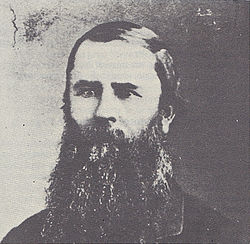| Vice State President of the South African Republic | |
|---|---|
| Vise-staatspresident der Zuid-Afrikaansche Republiek | |
 | |
| Style | His Excellency |
| Formation | March 1877 |
| First holder | Paul Kruger |
| Final holder | Schalk Willem Burger |
| Abolished | 31 May 1902 |
The Vice State President of the South African Republic (Dutch : Vise-staatspresident der Zuid-Afrikaansche Republiek) was the second highest political position in the South African Republic.
Contents
The vice president was chosen by the Volksraad among the members of the Executive Council (Uitvoerende Raad). The vice president was to act if the State President of the South African Republic was indisposed in case of mental or bodily disability, or was outside of the country. The vice president was constitutional successor of the president. [1]
The position was first established in March 1877 before the British annexation in April 1877. [2]





